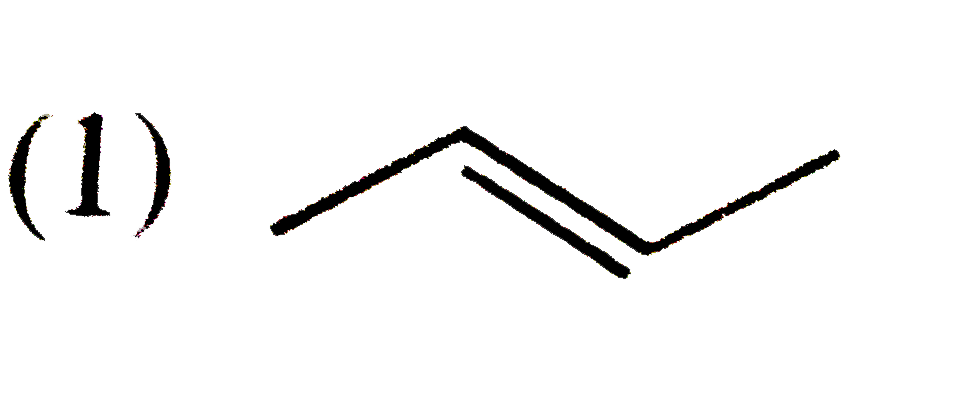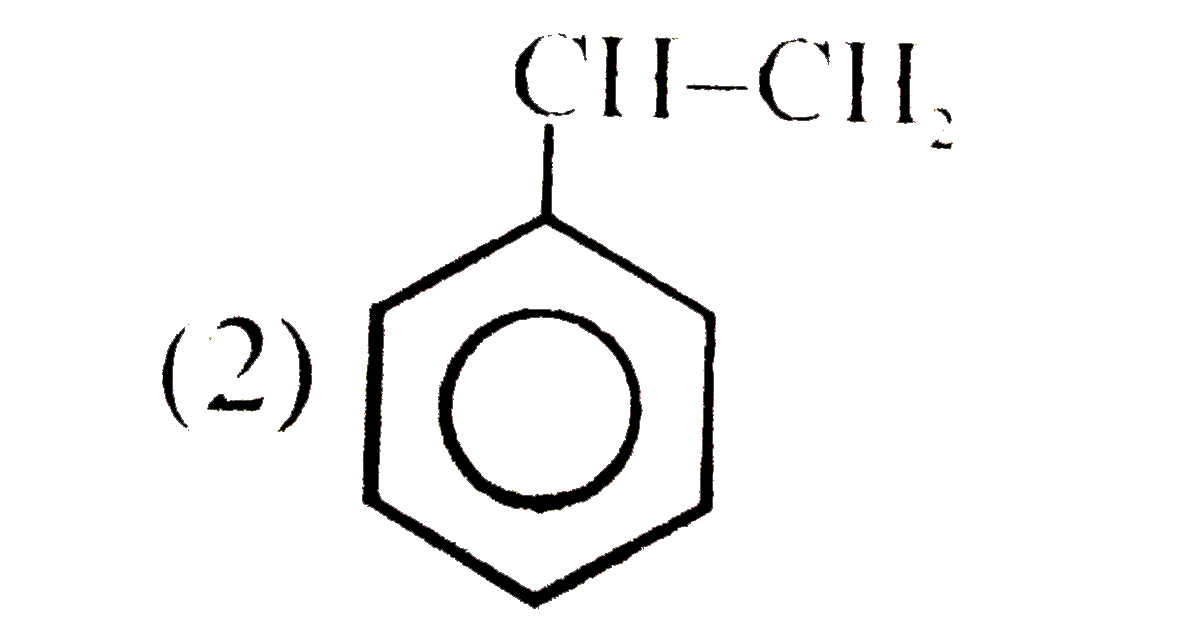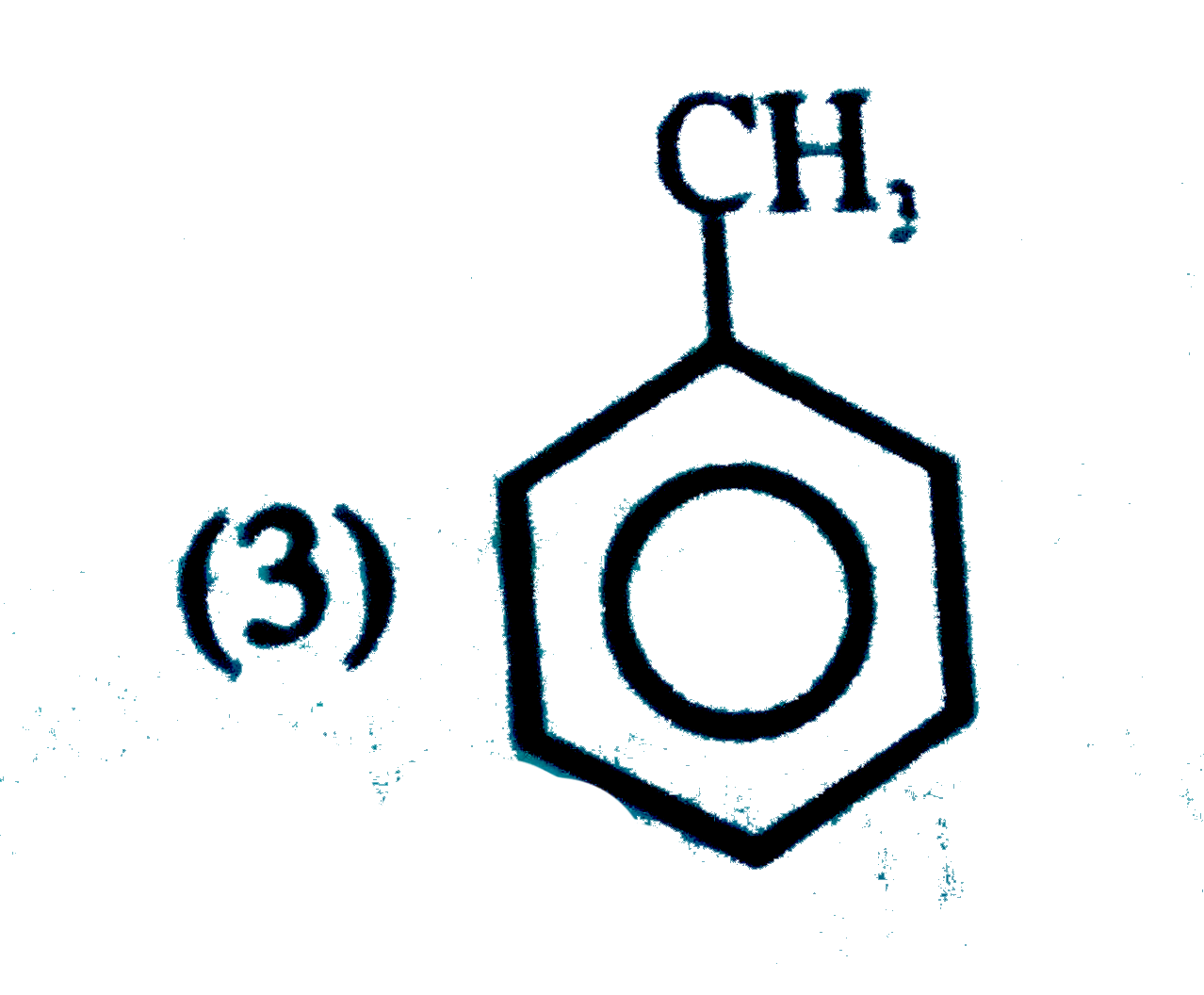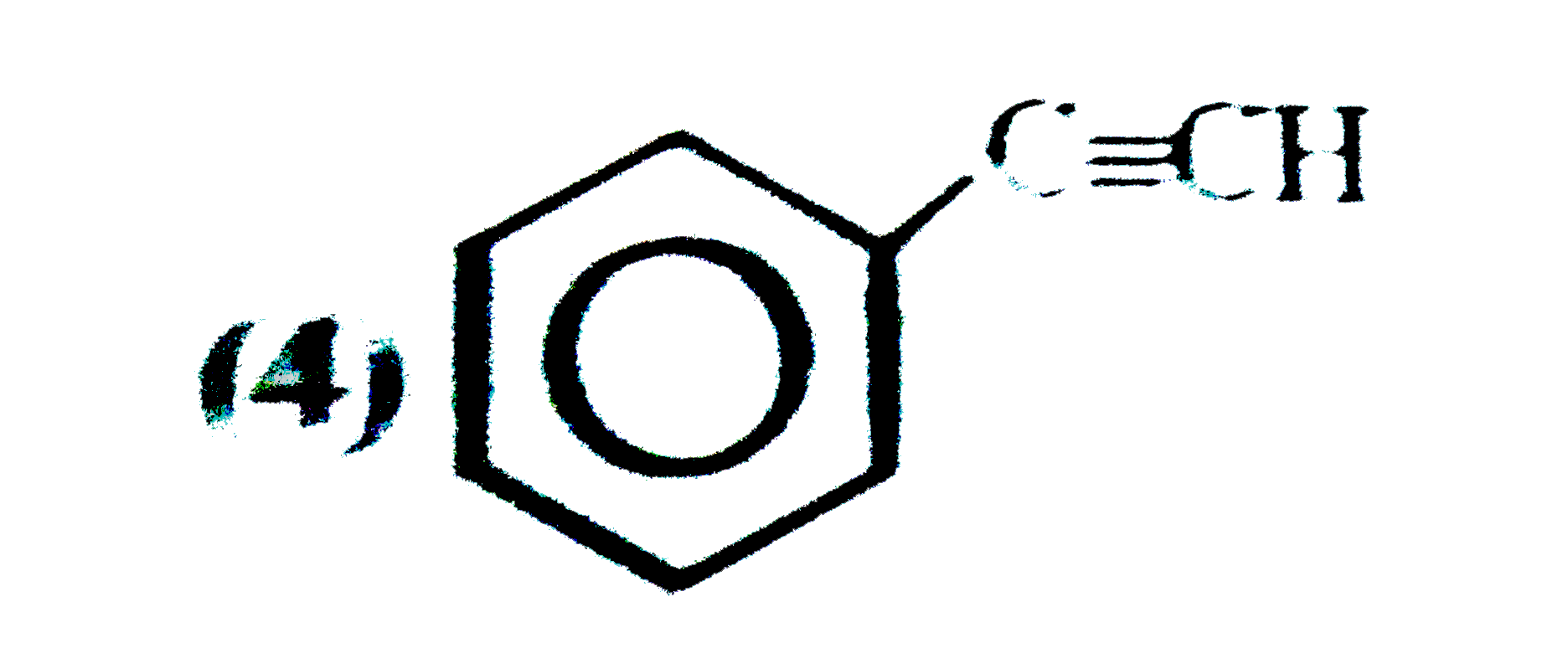Which of the following does not decolourise reddish brown solution of :




The correct Answer is:C
To determine which of the following compounds does not decolorize the reddish-brown solution of Br2/CCl4, we need to analyze the nature of the compounds provided in the options. The reddish-brown color of bromine in carbon tetrachloride (CCl4) is due to the presence of Br2, which is a diatomic molecule. Unsaturated compounds, such as alkenes and alkynes, can react with bromine, leading to the decolorization of the solution.
1. Understanding the Reaction:
- The reddish-brown color of bromine is due to the Br-Br bond. When bromine reacts with unsaturated compounds (alkenes or alkynes), the Br-Br bond breaks, resulting in the formation of colorless products.
2. Identifying Unsaturated Compounds:
- Alkenes (C=C) and alkynes (C≡C) are unsaturated and will react with bromine to decolorize the solution.
- Aromatic compounds, despite having double bonds, do not react with bromine in the same way because they maintain their aromaticity.
3. Analyzing Each Option:
- Option 1: Alkene present - This will decolorize the bromine solution.
- Option 2: Alkene present - This will also decolorize the bromine solution.
- Option 3: Aromatic compound (e.g., benzene) - This does not react with bromine in CCl4 to decolorize the solution due to its stable aromatic structure.
- Option 4: Alkyne present - This will react with bromine and decolorize the solution.
4. Conclusion:
- The compound that does not decolorize the reddish-brown solution of Br2/CCl4 is the one that is aromatic (Option 3).
Final Answer:
The compound that does not decolorize the reddish-brown solution of Br2/CCl4 is Option 3 (the aromatic compound).
- The reddish-brown color of bromine is due to the Br-Br bond. When bromine reacts with unsaturated compounds (alkenes or alkynes), the Br-Br bond breaks, resulting in the formation of colorless products.
- Alkenes (C=C) and alkynes (C≡C) are unsaturated and will react with bromine to decolorize the solution.
- Aromatic compounds, despite having double bonds, do not react with bromine in the same way because they maintain their aromaticity.
- Option 1: Alkene present - This will decolorize the bromine solution.
- Option 2: Alkene present - This will also decolorize the bromine solution.
- Option 3: Aromatic compound (e.g., benzene) - This does not react with bromine in CCl4 to decolorize the solution due to its stable aromatic structure.
- Option 4: Alkyne present - This will react with bromine and decolorize the solution.
- The compound that does not decolorize the reddish-brown solution of Br2/CCl4 is the one that is aromatic (Option 3).
The compound that does not decolorize the reddish-brown solution of Br2/CCl4 is Option 3 (the aromatic compound).
Topper's Solved these Questions
Similar Questions
Knowledge Check
Which out of the following does not belong to brown algae
AGelidium,BatrachospermumBEctocarpus,dictyotaCLaminaria,fucusDSargassum, ectocarpus
Which of the following compounds release reddish brown gas on heating?
View SolutionWhich of the following compounds release reddish brown gas on heating?
View SolutionWhich of the following does not liberate Br2 form KBr ?
View SolutionWhich of the following decolourise(s)Br2 solution ?
View SolutionWhich of the following is reddish brown
View SolutionWhich one of the following compounds can decolourise alkanes KMnO4 solution?
View SolutionWhich of the following is a reddish-brown pollutant gas?
View Solution